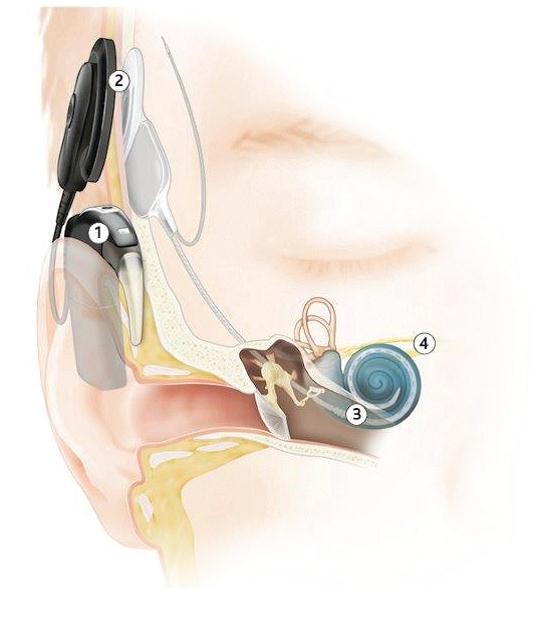A cochlear implant may improve hearing and communication if a person who uses hearing aids reports:
- reduced clarity when listening to speech
- relying on lip-reading or visual cues
- difficulty communicating on the phone
- difficulty participating in social occasions.
How hearing works with a cochlear implant system
There are two main parts to a cochlear implant system:
- the implant, and
- the sound processor.
The implant and the sound processor work together to transfer sounds from the environment into electrical signals, which are then presented to the inner ear. The inner ear and brain then perceive these signals as sound or hearing.

- The sound processor captures sound and converts it into digital code.
- The sound processor transmits the digital code to the implant under the skin.
- The implant converts the digital code to electrical signals and sends them along the electrode array, which is positioned in the cochlea.
- The implant’s electrodes stimulate the cochlea’s hearing nerve fibres, which relay the sound signals to the brain to produce hearing sensations
